1. Arby’s “Meat Mountain”
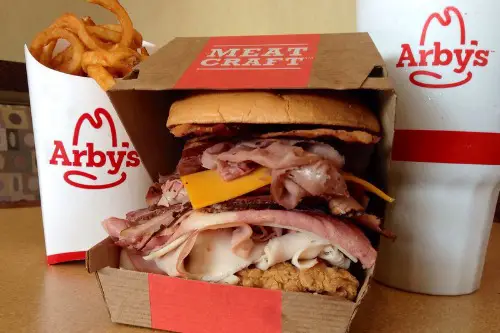
Arby’s quietly introduced a secret menu item called the Meat Mountain—a sandwich piled high with nearly every meat they offer. That includes roast beef, chicken tenders, turkey, ham, corned beef, brisket, and bacon, topped with Swiss and cheddar. It wasn’t advertised traditionally—you had to ask for it. But word-of-mouth turned it into a cult legend.
The Meat Mountain is less of a meal and more of a challenge to human dignity. It’s absurd, unapologetic, and exactly the kind of meat monument only America would dream up. No one needs it, but that’s never the point. It’s about choice, spectacle, and saying “yes” when your body is screaming “no.”
2. KFC’s Double Down
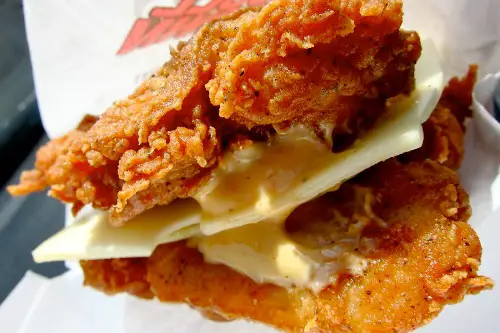
KFC flipped the sandwich concept on its greasy head in 2010 by eliminating the bun entirely—and replacing it with two slabs of fried chicken. The Double Down was bacon, cheese, and sauce smushed between two fillets, because who needs bread when you’ve got more meat? It sounded like a dare more than a meal, and that’s kind of the point. America’s food culture doesn’t just push boundaries—it deep-fries them.
The Double Down quickly became a cultural lightning rod, sparking think pieces, medical warnings, and a flood of YouTube taste tests. It came back in limited runs due to popular demand, proving that no matter how ridiculous, some ideas just won’t die. It wasn’t about refinement—it was about bravado. And that’s American marketing in a greasy nutshell.
3. Taco Bell’s Doritos Locos Tacos
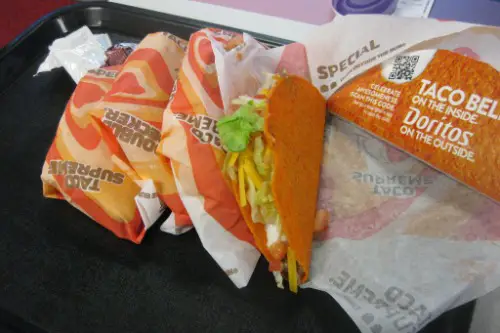
When Taco Bell fused two brand giants by using a Doritos shell for its tacos in 2012, it became one of the most successful fast food launches ever. Over 100 million were sold in just ten weeks. It was stoner food gone mainstream, an edible mashup that felt like it came straight from a basement gaming session. Only in America would a neon-orange snack chip become the structural foundation of a taco.
The gimmick worked because it doubled down on brand nostalgia and sensory overload. People didn’t just buy the taco—they Instagrammed it, tweeted it, and bought it again. It was the perfect storm of flavor science and marketing wizardry. It screamed “why not?” in a way that only Taco Bell can pull off.
4. McDonald’s McDLT
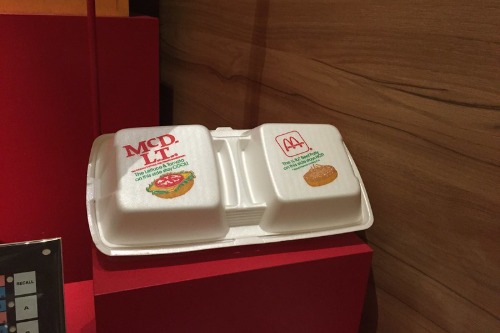
In the 1980s, McDonald’s tried to convince people they needed a burger with hot and cold parts stored in separate compartments. The McDLT’s packaging came in a bulky Styrofoam container to “keep the hot side hot and the cool side cool.” It was Jason Alexander’s first big commercial gig, long before Seinfeld. And it felt like a prime example of American over-engineering applied to fast food.
The burger wasn’t any better than the standard fare, but it was wrapped in a shiny promise of innovation. The packaging was terrible for the environment, which helped kill the product by the early ’90s. Still, it had that uniquely American flair for solving a problem nobody asked about. Like many gimmicks, it aimed for style over substance—and paid the price.
5. Burger King’s “Proud Whopper”
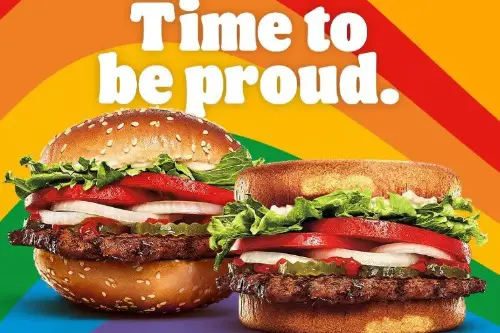
In 2014, Burger King released the “Proud Whopper” wrapped in rainbow-colored paper during Pride Week in San Francisco. Inside? Just a regular Whopper. But the message printed on the wrapper read, “We are all the same inside,” turning a basic burger into a branded message of inclusion.
The gimmick was pure marketing gold—and sparked both praise and backlash. Some saw it as authentic allyship; others called it corporate pandering. Either way, it was a very American moment: turning social awareness into a fast food campaign. You could say it was activism… with fries.
6. Hardee’s/Carl’s Jr. “Sexy Burger Commercials”
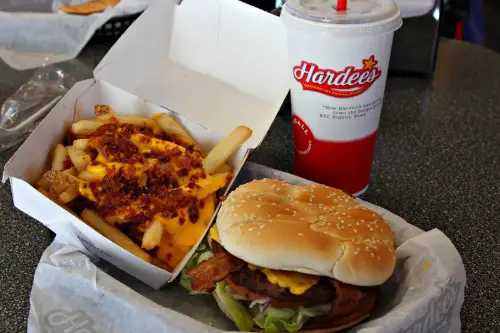
Hardee’s and Carl’s Jr. spent much of the 2000s selling burgers with bikinis. They ran a series of ads featuring models like Paris Hilton and Kate Upton eating giant burgers in slow motion, usually while washing a car or straddling a mechanical bull. It was like a Carl’s Jr. boardroom asked, “How do we make burgers horny?” and just ran with it.
It was marketing through testosterone and shock value, wrapped in a sesame seed bun. The burgers weren’t anything new—it was the attitude they were selling. Eventually, the company moved away from the campaign, realizing that maybe cleavage wasn’t a sustainable strategy. Still, it remains one of the most over-the-top examples of American-style food branding.
7. Taco Bell’s “Bell Beefer”
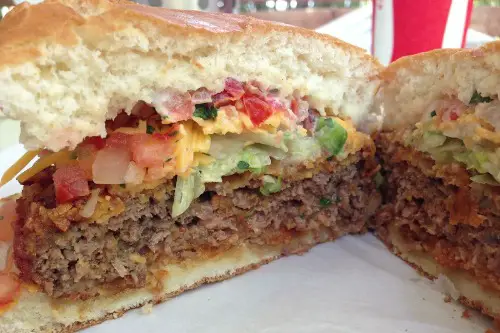
Back in the 1970s and ‘80s, Taco Bell sold something called the Bell Beefer—basically, a Sloppy Joe made with taco meat. It was a burger bun filled with seasoned ground beef, lettuce, and sauce, but no actual taco shell. Why? Because America will always try to put everything on a bun at some point.
It didn’t last long, but it developed a weird cult following among nostalgic fans. People still beg Taco Bell to bring it back, despite it being an objectively strange idea. It’s the kind of mashup that could only happen in a country where efficiency meets indulgence. If tacos are good and burgers are good, why not cram them together?
8. McDonald’s Arch Deluxe
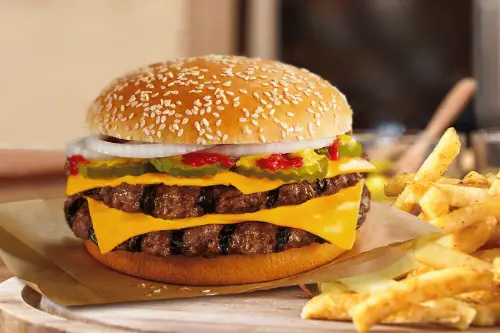
In 1996, McDonald’s tried to “adultify” its menu with the Arch Deluxe, a burger aimed specifically at grown-ups. It featured a special mustard-mayo sauce, a potato bun, and a marketing campaign worth over $100 million. The ads basically implied kids wouldn’t get it, which—unsurprisingly—didn’t exactly win hearts. You could say it was McDonald’s midlife crisis in sandwich form.
The Arch Deluxe flopped hard, becoming one of the biggest failures in fast food history. But it was so American to think a better burger just needed fancier bread and aggressive branding. The idea that burgers could be “elevated” while still coming from a drive-thru was ambitious, if a little misguided. It showed that even giants like McDonald’s could swing and miss, especially when they take themselves too seriously.
9. KFC’s “Chizza”
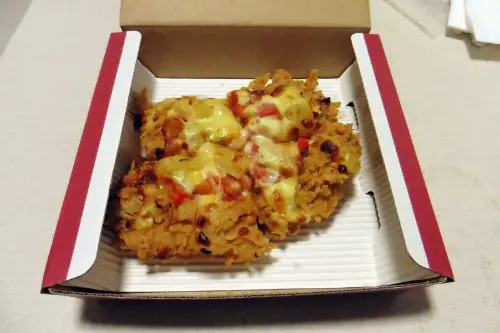
KFC’s Chizza—a pizza with a fried chicken crust—rolled out in international markets like the Philippines and India before eventually reaching the U.S. It replaced the dough with a flattened piece of fried chicken, then piled on tomato sauce, cheese, and toppings. It’s pizza. But it’s not.
The Chizza felt like something you’d invent at 2 a.m. with leftover takeout and no regrets. It wasn’t healthy, it wasn’t elegant, but it was loud and proud. America may not have invented it, but it speaks fluent “extreme food culture.” If your arteries didn’t flinch, were you even doing it right?
10. Dunkin’s “Charli” Drink
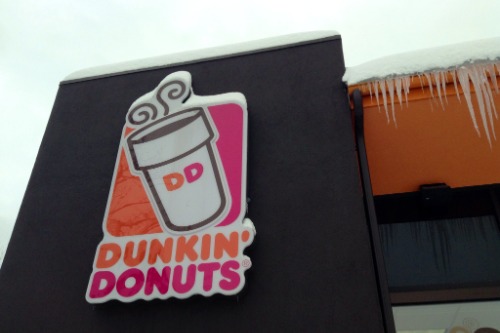
In 2020, Dunkin’ partnered with TikTok star Charli D’Amelio to launch “The Charli,” a cold brew drink named after the teen influencer. It was literally just a cold brew with caramel and whole milk—but it sold like crazy. Fans rushed to try “what Charli drinks,” making it one of Dunkin’s most viral launches ever. It was brand synergy at its most hyper-online.
The move made sense in a country where influencers are basically modern royalty. The gimmick worked because it wasn’t about the drink—it was about the clout. Dunkin’ didn’t change the recipe, just the narrative. And suddenly, coffee was cool with Gen Z.
11. Burger King’s Halloween Whopper
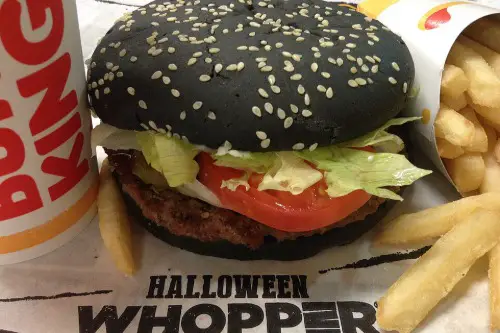
In 2015, Burger King turned heads (and stomachs) with a Halloween Whopper that had a pitch-black bun. It was flavored with A1 Steak Sauce and looked like something Batman would eat. But the real buzz came after: people started reporting green poop after eating it. Nothing says “spooky season” like alarming your digestive system.
Burger King leaned into the shock factor, and it totally worked—for a limited time. It was gimmicky, sure, but also a master class in using visuals to get attention. Nobody really cared how it tasted—it looked like Halloween. It was fun, weird, and totally American in its celebration of excess.
12. Pizza Hut’s “Cheeseburger Crust” Pizza
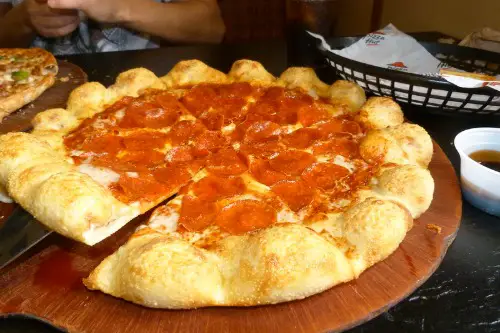
In 2012, Pizza Hut unleashed a Frankenstein’s monster of a meal: a pizza ringed with mini cheeseburgers in the crust. It wasn’t even launched in the U.S. first—it debuted in the Middle East—but it was so over-the-top American, it felt like it should come with an eagle screech. Think about it: when a regular crust just isn’t enough, the solution is more meat. Because in the land of the free, we ask not “should we?” but “why the hell not?”
The gimmick perfectly encapsulated a uniquely American obsession with stuffing one food inside another. It wasn’t about better taste—it was about maximum shock value. Sure, it made headlines, but it never stuck around for long. Still, it lives on in the meme hall of fame of absurd fast food experiments.
This post 12 Fast Food Gimmicks That Were So American It Hurt was first published on American Charm.


